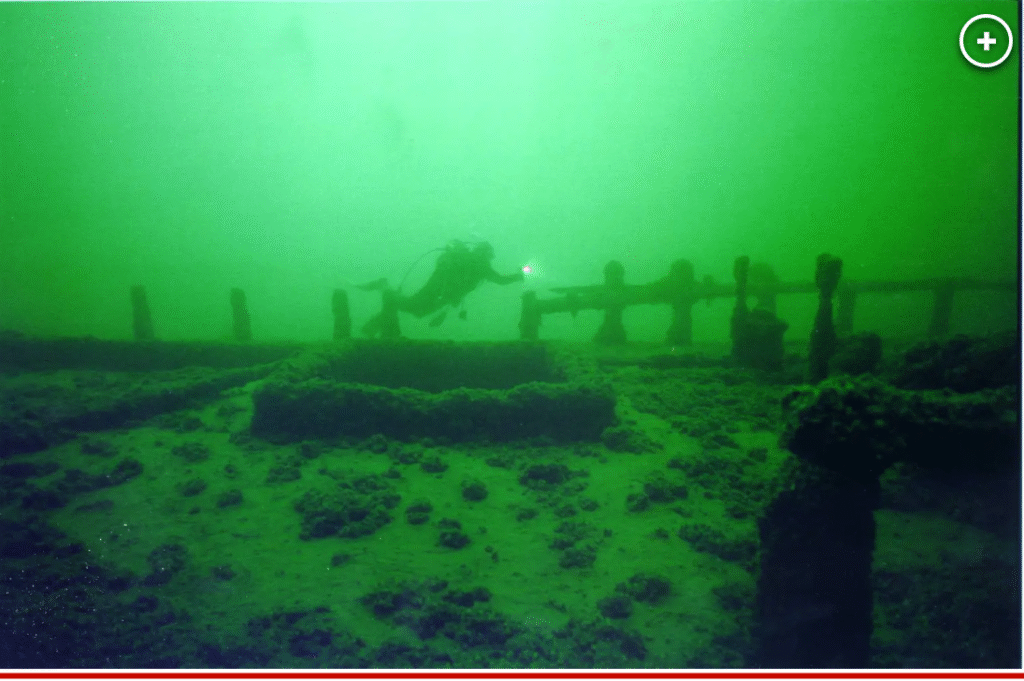The team diving in Lake Ontario stumbled upon a completely intact shipwreck — with its masts still standing — that could date back to the early 1800s, giving them insight into an era of Great Lakes shipbuilding history now faded with time.
The unidentified ship, discovered 100 meters below the surface of the massive lake by Trent University archaeologist James Conolly, was first noticed as a “large anomaly” in 2017 during a fibre-optic cable survey on the bottom, according to the CBC.
“It took us a few moments to calm ourselves down because it’s overwhelming finding a pristine wreck that is all in one piece,” Ontario Underwater Council President Heison Chak, who led the dive, told the outlet.
“It’s got its shape. It hasn’t broken down both masts. We saw two — both masts were standing, which is pretty rare. In all the rest that I have dove, either they have fallen off, because boats come across them, anchors wreck them [or] divers damage them.”

Chak, who has two decades of experience diving at shipwreck sites in Canada, the U.S., and the Caribbean, said he has never happened upon a topmast, which is located above the lower mast and supports the rigging and yards for a topsail.
“I have never seen a top mast in any wrecks that I have dove in Ontario or in the St. Lawrence River,” he added.
The dive team — which had originally set out to find the wreck of the Rapid City built in 1884 and lost in 1917 — estimated the age of the newly discovered ship based on its lack of a centreboard and wheel on the aft deck as well as its older “rope” rigging.
“Metal rigging is only a common feature after the 1850s. So it immediately puts it into, likely, the first half of the 19th century,” archaeologist Connolly told the outlet.
Being that the vessel was so far down at more than 300 feet, dive team leader Chak presumes his crew was the first to ever find it.
“This is deep enough that I don’t think anyone’s been on it. I think we’re the first group and that joy was just overwhelming,” he said.
By ANGELA BARBUTI/New York Post



